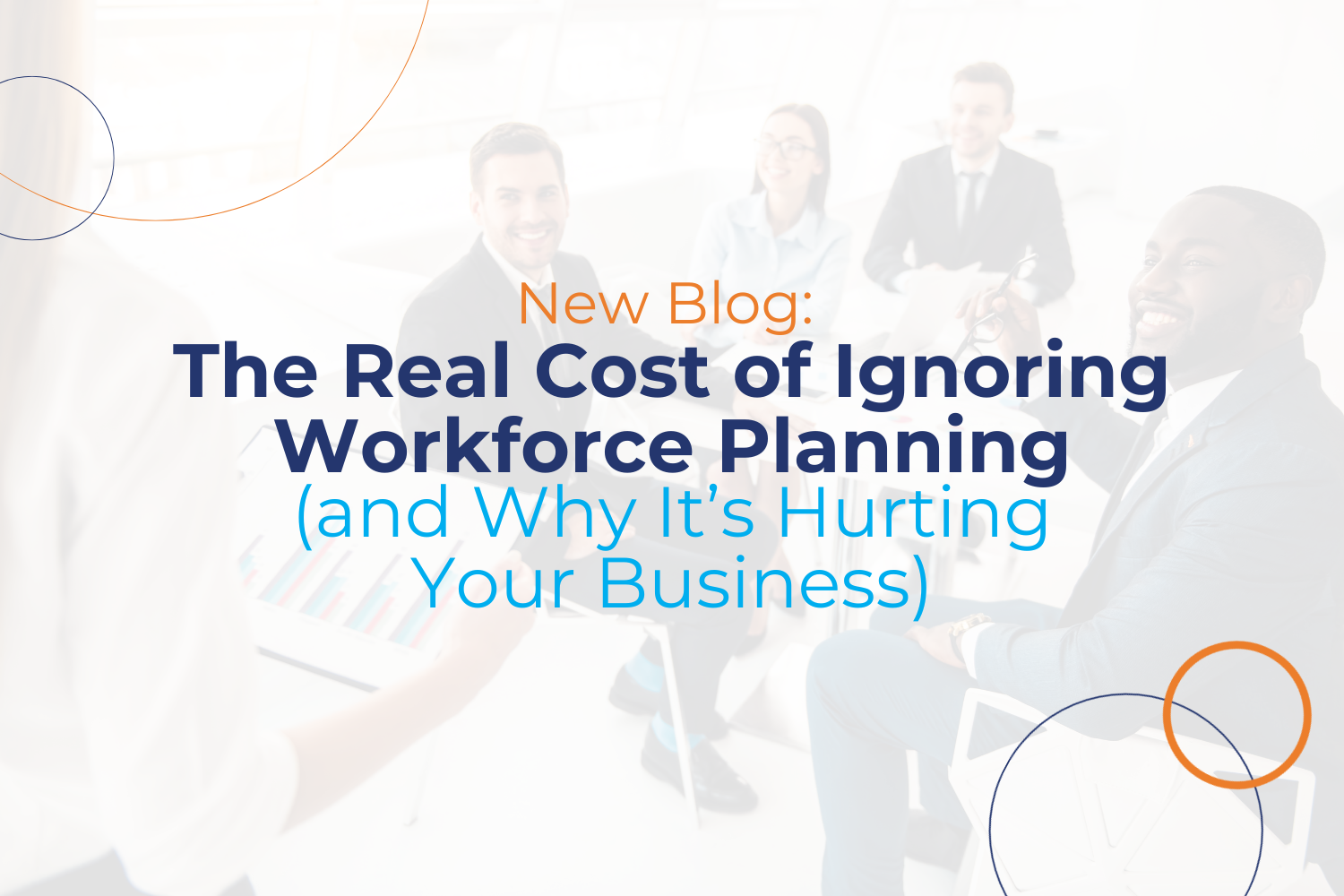Tired of gambling with your hiring? Data-driven recruitment isn’t new magic – it’s proven math. Your perfect candidate is out there scrolling, but they’re rolling their eyes at random job ads and dodging outdated LinkedIn messages.
Let’s show you what this looks like in action. (Or how do you cut through the noise and get the attention of top talent?)
Take B/E Aerospace, who cracked the code of smart recruiting when hunting for aerospace engineers. Instead of plastering job ads everywhere, they got methodical.
They studied talent movement patterns like weather maps. Added to this by mapping competitor data. Finally, they pinpointed which engineers were open to moving. Simple, strategic, smart.
That’s what we call data driven recruitment (more about this coming up).
Smart hiring isn’t about casting the widest net—it’s about knowing exactly where to fish. In this guide, we’ll walk you through how to use data to spot, attract, and land the talent your company actually needs. Keep reading.
What is Data-Driven Recruitment?
Data-driven recruitment is a strategy that uses hard facts to make smarter hiring decisions. Instead of relying on assumptions, you collect and analyze information about your candidates and the hiring process.
This data-driven approach touches every part of hiring—from finding job seekers to selecting the right ones. It helps you answer questions like:
- Where should you focus your recruiting efforts? – ( towards the talent-mining spot)
- Which candidates are most likely to succeed?– (finding the perfect ninja)
- How can you speed up your recruiting process?– (hire smart, not hard)
- Are we spending your recruitment budget wisely? – (plan the right allocation)
Data helps you make more informed hiring decisions that lead to building efficient teams rather than just filling vacant positions.
What it’s not: Data-driven recruitment process isn’t about replacing recruiters with robots or turning hiring into a pure numbers game. It’s not endless A/B testing of job descriptions or obsessing over every minor metric.
And contrary to popular belief, it doesn’t require a massive tech stack or a team of data scientists. Even small teams can start making smarter, data-backed hiring choices today.
What are the Benefits of Data Driven Recruitment?
87% percent of talent professionals track candidate outreach data—43% through automated solutions and 44% through manual tracking. Why? Because data-driven recruitment delivers clear, measurable advantages. Here’s what you gain:
📈 Higher Quality Hires
Top performers outshine average employees by 800% and bring about 2.6 times the ROI. That’s why improving hire quality matters. Data driven recruitment helps you spot these standouts by answering
- How quickly new hires become productive
- Who stays with the company long-term
- Which employees become top performers
- Where your best hires come from
The data tells interesting stories—maybe your referral hires have the lowest turnover, or that one specific job board keeps sending you star performers. You can spot patterns in what makes your best employees tick – their backgrounds, skills, and qualities.
🎯 Bias-Free Decisions
Data driven recruitments remove those “Oh, I have a nice feeling about this person” moments. Because here, you’re using pre-employment assessment scores, work sample test results, skills evaluations, and structured interview outcomes.
Here’s what happens when you let valuable data guide your decisions:
- Every candidate gets the same fair evaluation
- Skills matter more than smooth talk
- Hidden biases come to light
- Diversity targets become trackable
For example, if your data shows female candidates aren’t making it past interviews, you can fix that with structured interview processes and better interviewer training on unconscious biases. It also builds a diverse and equal pool of talent within the organization.
🌟 Enhanced Candidate Experience
Top talent has options—lots of them. They choose organizations that put candidates first. When your talent acquisition strategy is powered by data, you can nurture your candidate pipeline well. You will spot and adjust glitches in your recruitment strategy when you know exactly
- Which stage of your recruitment process accounts for more candidate drop-offs
- Which aspect of your application process candidates find tedious
- Why do certain job roles stay vacant for a long time
💡 Pro Tip:
Boost your application completion rates instantly for a better candidate experience:
1. Optimize your application process for mobile—over 60% of job searches happen on phones. Track your bounce rates through Google Analytics to spot where candidates bailout.
2. Tackle the boring stuff—break up those endless application forms, add progress bars so candidates know what they’re in for, and let them save their progress.
3. Throw in some interactive elements like skill games or quick video intros. Small tweaks like these can boost your completion rates by 10% or more.
🔮 Better Future Planning
Data driven recruitment helps you hire today and prepare for tomorrow. With data, you have key metrics like turnover rates, departmental movements, and skill gaps in place. Here’s what all these metrics help you do.
- If data shows a regular turnover in certain months, you can plan ahead so you won’t have to scramble to fill positions at the last minute.
- Data helps you know how much money to allocate for recruitment. If X employees are likely to leave in the next year, you’ll know how much of the budget to set aside for new hires.
- Historical data on hiring timelines can tell you how long it typically takes to fill roles. This allows managers to plan projects more effectively—You’re never left short-staffed.
💰 Lower Hiring Costs
Smart data use slashes recruitment costs by helping you track cost per hire across different sources alongside hire quality. You will discover:
- Which platform brings more qualified candidates (job boards or LinkedIn)?
- Which channel brings more ROI?
- Underperforming recruitment tools that candidates don’t use anymore
Each insight leads to smarter spending.
The best outcome of data-based hiring to match candidates to roles and cultures is better retention. Each successful long-term hire means one less replacement search to fund.
⚡ Faster Hiring Process
It’s important to find out if there are any slow spots in your recruitment pipeline. With that insight, you’ll know where your recruiting efforts are lagging. Data-driven recruitment helps by:
- Highlighting bottlenecks in your hiring pipeline
- Comparing your time to hire against industry benchmarks
- Automating manual resume screening
- Accelerating decision-making with clear metrics
When you use data to fasten your recruitment, you hire better talent before the other recruiters in the industry do—that is, one less top talent you lose to your competitor.
How to Set Up a Data-Driven Recruitment Strategy
You now know why data driven recruiting matters. But how do you actually make it happen? Here’s your step-by-step guide to building a recruitment strategy that lets data lead the way.
Step 1: Understand Present Capabilities
Start by listing every tool in your hiring process. Each one captures unique data points about your candidates and process.
- List every tool in your hiring process (ATS, career page, assessment platforms)
- Document what data each tool captures
- Review your sourcing channels’ analytics (LinkedIn engagement, Indeed application patterns)
At this stage, you need answers to three key questions:
- What metrics are you tracking already?
- Which ones do you need to start monitoring?
- What resources—both money and time—can you invest in new data collection methods?
These data driven insights form your baseline. They show you exactly where you stand and what you need to strengthen in your entire recruitment process. Gather your team and document every piece of data you currently access.
Step 2: Select Relevant Recruitment Metrics
Data drives good recruitment, but not all data. While quality of hire, cost per hire, and time to fill are universal, your specific challenges demand targeted tracking. A startup scaling rapidly needs different metrics than an enterprise focusing on diversity hiring.
Match your metrics to your pain points.
- Are your job offer acceptance rates dropping? Track candidate experience scores and interview feedback.
- Struggling with new hire performance? Monitor source quality and time to productivity for all recruitment channels.
Also, customize your tracking based on role types. Sales positions might need metrics around past quota attainment, while engineering roles could focus on technical assessment scores. Leading companies even track interview-to-hire ratios by interviewers to spot biases and improve decision-making.
Suggested read: HR metrics and Key Performance Indicators
Step 3: Collect Data And Act On It
The next step is to collect the right data and categorize them. The important categories are
- Operational data
- Candidate data
- Sourcing data
- Employee performance data
Also, when you use recruitment analytics to collect relevant data, there are two best practices worth noting.
(a) Respecting candidate privacy: Get consent and follow data privacy regulations.
(b) Ensuring data hygiene: Collect data from reliable sources, organize them into your recruitment database, and perform regular audits to check relevance.
Keep an eye on trends and not just one-time results to ensure your talent strategy serves you long-term. For example, When you spot trends—like discovering that candidates from coding boot camps outperform traditional CS graduates in technical roles—use these insights to refine your sourcing strategy.
💡Quick Tip:
Here’s a list of key data sources and metrics you can use to start data collection right away:
1. Job boards (application rates, source effectiveness)
2. HRIS (employee lifecycle data, turnover patterns)
3. Assessment platforms (candidate competencies, culture fit scores)
4. ATS (pipeline metrics, time to hire)
5. CRM tools (candidate engagement rates, dropout points)
6. Social media analytics (reach, candidate demographics)
7. Performance management systems (new hire retention rates)
8. Interview feedback forms (hiring manager satisfaction scores and insights)
Step 4: Train Your Team
Don’t expect your teams to be recruitment analytics experts from the start. Train them on practical skills for working with data. Here’s how you can get started.
- Show them which metrics directly impact their daily work. For example, a recruiter managing high-volume retail hiring will track different data points than someone hiring for specialized roles. So, train them just on what their routine depends on.
- Run hands-on sessions using your actual dashboard. Get them comfortable pulling reports on key performance indicators and interpreting the trends.
- When reviewing quarterly data together, encourage the hiring team to question the numbers and dig deeper into what’s working in their process.
- Set up weekly check-ins where recruiters share their findings and common recruitment challenges. Some team members might need extra support with forecasting data, while others want to learn competitive job market analytics.
- Run monthly refresher sessions since recruitment tools and metrics evolve constantly. Pay attention to how each person uses the tools and adjust training accordingly.
| Use Peoplebox’s AI-powered People Analytics platform to gain more in-depth, useful data about your workforce and company growth. The platform provides actionable insights for all HR-related tasks— from talent acquisition to retention. |
Step 5: Consider Data Limitations
Data certainly enhances recruitment decisions, but it also comes with a few restrictions you must note. Recent studies show that relying too heavily on automated screening can exclude qualified candidates who don’t fit exact keyword matches or have non-traditional career paths. Watch out for the following limitations.
- Structured assessment data might miss unique skills or experiences that could benefit your organization.
- Historical recruitment data often carries inherent biases – previous hiring patterns might reflect outdated preferences rather than actual job success factors.
- Incomplete candidate profiles, inconsistent evaluation methods, and varying response rates in candidate survey feedback can skew your metrics.
Regularly review your data collection methods and evaluation criteria to ensure they align with current hiring needs and workplace dynamics.
💡Pro Tip:
Do not completely take the human element out of your decision-making. Combine recruitment metrics with human judgment.A candidate’s potential, adaptability, and cultural contribution often surface through conversations and interactions, not just data points. Consider the context behind the numbers—market conditions, industry changes, and regional differences all impact your recruitment data.
Stay critical of automated recommendations. Question unexpected patterns, validate findings across different data sets, and regularly update your tracking parameters.
Step 6: Compare Metrics And Repeat
Keep testing new ideas against solid metrics. When you switch up interview formats or try different assessments, track the results systematically. Get input from hiring managers and new hires about what’s actually making a difference, not just what looks good on paper.
Sometimes, all your data driven hiring efforts may indicate you’ve been on the right track from day one. You must still look out for current trends and new developments in data analytics software to yield better outcomes.
Also read: 15+ Best Recruitment Analytics Software in 2024
💡 Pro Tip:
Start each month with a quick 30-minute metric review:1. Compare this month’s numbers against last quarter
2. Spot three biggest changes (good or bad)
3. Pick one area for immediate action
4. Share key findings with hiring managers
5. Schedule deep dives only for significant shifts
Tools and Technologies for Data Driven Recruitment
Recruitment data analysis needs a solid foundation to support the long-term data collection process. The right recruitment software will provide that foundation. Here are some tools and technology you should consider investing in.
✔ Application Tracking Software (ATS): It’s one of the most common tools that small business to Fortune 500 companies employ. It maintains a database of applying candidates, their past job applications, and communication in an organized way.
✔ Feedback and Survey Software: When you receive regular feedback from your candidates, you’ll get insights into your recruitment process challenges. With that data, you can work on improving the candidate experience.
| 💡Make Performance Reviews Worth Everyone’s Time Run holistic reviews right where work happens—in Slack or Teams. Join 500+ companies who’ve simplified their review process with Peoplebox’s Performance Review Software. |
✔ Recruitment Dashboard: This tool makes it easier to see patterns, display data, and swiftly detect problems. It displays applicants, jobs, campaigns, and budgets. A recruitment dashboard helps you spot issues and opportunities fast.
✔ Predictive Analytics: It uses AI to predict hiring requirements and candidate success with a data driven method of managing talent. It helps with better recruiting decisions by forecasting candidate performance and fit.
| 💡 Screen Resumes 90% Faster Stop drowning in applications. Peoplebox’s smart screening tool instantly spots top talent with deep insights beyond the resume. Find the right candidates faster in your ATS with our AI resume screening tool. |
Make Data Driven Hiring Decisions With Peoplebox
Looking to level up your data driven recruitment strategy? Peoplebox adds an extra layer of intelligence you’ve been missing. Our platform serves up hiring insights that actually make sense. Here’s why you’ll love it:
- Our AI screens thousands of resumes while you grab that coffee – cutting review time by 90%
- Spots candidate goldmines your ATS might miss, pulling insights from across the public domain
- Auto-scores applications against your must-haves (and nice-to-haves)
- Matches qualified candidates to all your open roles, because talent shouldn’t be typecast
- Tags and tracks every application so your talent pool never goes cold
- Plays perfectly with your tech stack – from HRIS to Slack, we’ve got those connections covered
- Public domain insights that tell you who candidates really are
- Custom reports that don’t make your head spin
Plus, it remembers every candidate you’ve seen. Looking for that amazing developer from last month? Tagged, sorted, and ready to find in seconds.

Just smarter, faster hiring decisions backed by real insights. Simple as that.
Summing Up
You’ll build teams that stick around and deliver results by tracking the right metrics, using smart tools, and keeping that human touch. Sure, it takes some setup and learning, but the payoff is worth it: better hires, lower costs, and a recruitment process that keeps getting better.
The key is starting small, measuring what matters, and letting the data insights guide your decisions. Take Peoplebox for a spin—book your demo and see what data driven hiring really looks like in action.
Frequently Asked Questions
1. What is the meaning of data-driven recruitment?
Data driven recruitment means making hiring choices based on real numbers and results rather than hunches. Companies track which candidates succeed in their roles, where they find their strongest applicants, and how different hiring approaches pan out over time. Hiring teams gather specific information throughout the process—from where candidates first apply to how they perform in interviews—to build a clearer picture of what works.
2. What is database recruitment?
Database recruitment means building and using a pool of candidate information for hiring needs. Companies collect resumes, skills, and work histories in one organized system, making it easier to find the right person when positions open up. Instead of starting each search from scratch, hiring teams can quickly search through qualified candidates they’ve already connected with.
3. What is the meaning of data driven HR?
Data-driven HR shifts people management from hunches to hard facts. HR teams collect and analyze workplace information—from staff turnover rates to training effectiveness—to make smarter decisions about their workforce. Instead of relying on traditional “best practices,” they track what’s actually moving the needle in areas like employee satisfaction, performance, and retention.











![Speed, Trust, and the Candidate AI Takeover: 2025 TA Trends [New Report]](https://lhra.io/wp-content/uploads/2025/05/LHRA-2025-TA-Trends-Report_Page_11.jpg)